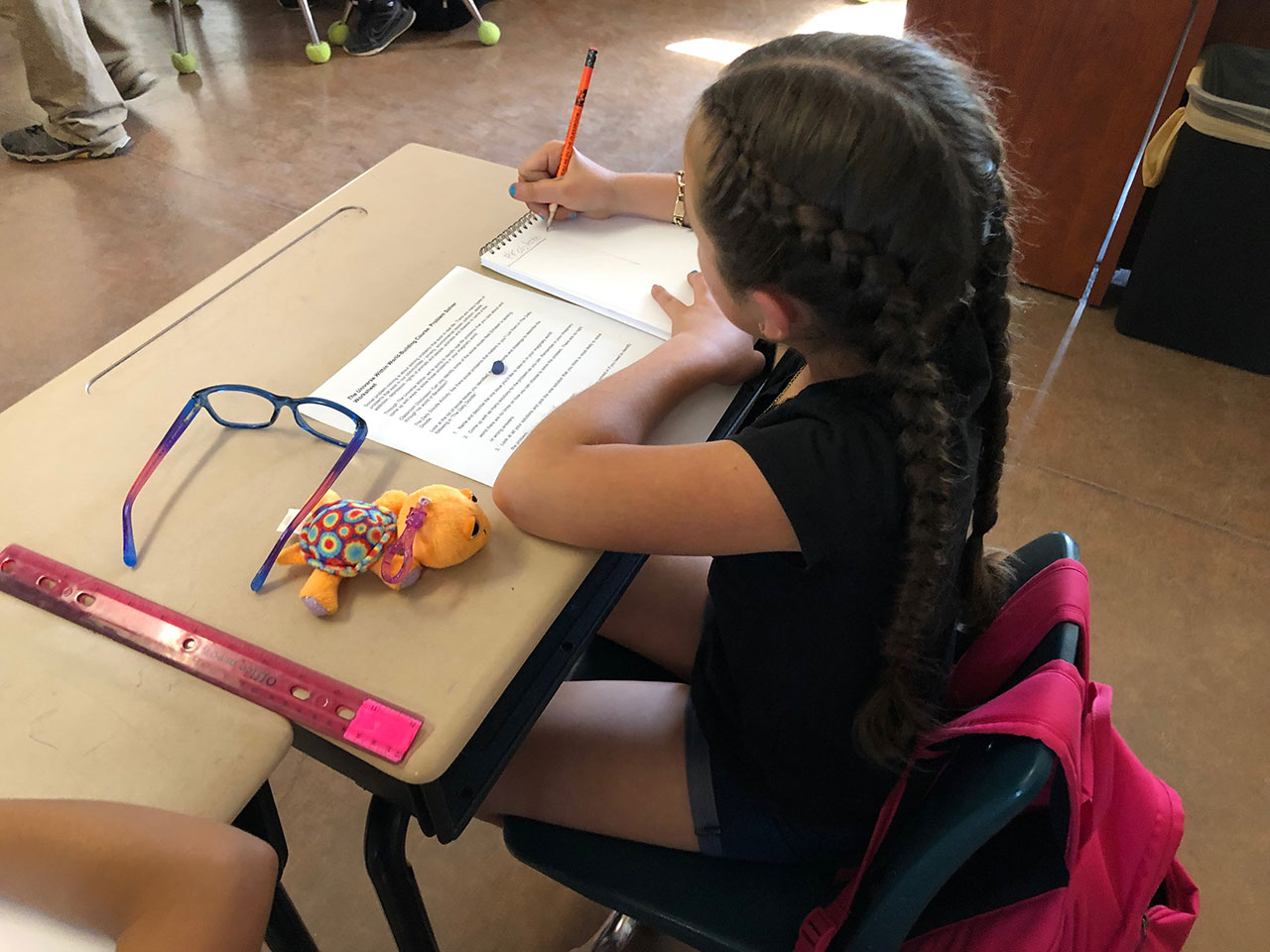Spark The Creative Genius In You
Time: 60 minutes
Materials: Lesson 2 video (when completed); The Daily Doodle notebook or student worksheets (link below) and pencils.
Overview: Students journey into the imagination center of their brains where the creative genius lives!
They learn that in order to keep the inner creative genius alive, they’ve got to keep using their imaginations. Students review creative techniques that will be used in The Universe Within such as brainstorming, making things with their hands, using the senses to make discoveries, doing more with less and listening to their intuition.
Students are encouraged to imagine, think outside the box, consider new possibilities as they develop physical attributes of their worlds. They receive the day’s assignment which is to explore what their worlds will look, feel, sound, taste and smell like.
Students create a group Idea Web to describe the sensory data of a place they all share in common. They then create an individual Idea Web to represent their own imaginary worlds. Conducting research on the computer, students investigate and analyze scientific properties of physical elements in their worlds and share what they’ve learned. They also begin to share what recycled and repurposed items they’ve collected so far with the group.
Assignments:
- As a group, students use an Idea Web to describe sensory data of a place that they all share in common.
- Individually, students integrate group Idea Web sensory data to construct elements of the environment in their imaginary worlds.
- Individually, students research, using the computer, and describe the scientific properties of one or two physical elements in their worlds.
- As a group, students share sensory attributes from their worlds and scientific properties of one physical element in their worlds.
- As a group, students share what recycled and repurposed items they’ve collected so far.
Downloads:
Student Sensory Data Text Worksheet
Student Sensory Data Table Worksheet
Instructor Protocol
Homework:
To prepare for building their own sculptures, students’ homework is to continue searching for found objects that are not being used and recycled items around the house, yard, and in town. They’re asked to use their senses to discover new shapes in their everyday surroundings such as old CD or DVDs, pop cycle sticks, buttons, paper cups and plates, a screw, feathers or any items that speak to them.

By the end of this lesson, students should be able to:
-Describe a shared setting using the senses
-Form connections between the senses and a common setting
-Assign meaning to the senses in an imaginary world
-Translate sensory data to physical elements and their corresponding scientific properties
This lesson meets the following Arizona State Standards:
-EnglishLangaugeArts-Literacy.Writing.3.7, 4.7, 5.7 (Research to build and present knowledge)
-VisualArts.Create.1.3a, 1.4a, 1.5a (Create an imaginative artwork, such as a work that responds to a story or an invented fantasy, add details, brainstorm multiple approaches, combine ideas and concepts)
-VisualArts.Create.2.3c, 2.4c, 2.5c (Describe, and visually represent constructed environments of personal significance)
-Theater.Create.1.3a, 1.4a, 1.5a (Create roles, imagined worlds, visual details, improvised stories in a theatrical work, and physical qualities that reveal a character’s inner traits)
-ScienceEngineeringPractices.CCC6.StructureAndFunction.3-5 (Different materials have different substructures, which can sometimes be observed)
All Contents for The Universe Within © 2020 Mat Bevel Company, Patagonia Public School and University of Arizona Schools of Mathematical Sciences.